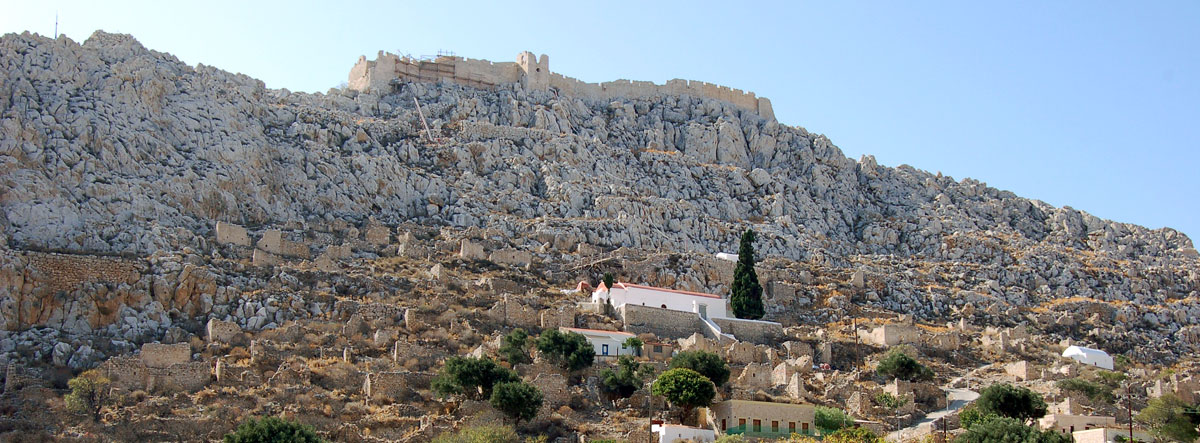
It has been proven that the island has been inhabited from prehistoric times, as pieces of obsidian rock from N. Mílos have been discovered, which bears witness to the fact that there was sea travel between here and the Cycládes.
Tradition has it that the name “Chálki” came from the bronze (“chalkós” meaning copper) mines there used to be on the island. The ancient geographer Strávon (1st century BC) called the island “Chalkía”. The castle (14 – 15th century AD) that towers above from the peak of a hill is built upon the ruins of an ancient citadel. Dorian colonisers from N. Ródos succeeded the Pre-Hellenes of the island.
During the historic years, Chálki was a tributary state of the town of Kamíros (N. Ródos) and in the 5th century BC the island was a member of the Athenian Allies. Through the passage of time the fate of the island basically followed that of N. Ródos. The Knights (from Spain, France, Italy, Germany and England) who conquered N. Ródos, also conquered Chálki and tried to enforce their religion. However, meanwhile the folk of the countryside were suffering under the Turks, who were unable to capture the castles and so pillaged the countryside, raping the women and seizing the children.
The continual decimation resulted in a treaty with the Turks in 1522 and the Knights left the island. Immediately the Turks violated the terms of the treaty and displayed great cruelty to the people. The Sultan Suleiman the Magnificent gave privileges to Chálki to stop the migration. In 1658 the Venetian Admiral Morozini disembarked on the island to punish them for warning Ródos of his approach. The punishment was inhumane. The islanders fought back and were all slaughtered. Most of the islanders sheltered in a two-storey cave (this type of cave is very rare worldwide) and they were penned in and burned.
In the 19th century Imporeió was founded and the island thrived due to sponge fishing. It led this industry along with the islands of Sými and Kálymnos. During the Wars of Independence against the Turks in 1821, Chálki revolts and offers itself to the Holy Cause, only to find that it would remain under foreign rule after the liberation of Greece. At the beginning of the 20th century due to restrictions in sponge fishing enforced by Turkey, the island fell into decline and the inhabitants began to emigrate.
In 1912 the Italians conquered the Dodekánisa and a new period of humiliation began for the islanders. The Italians closed the Greek schools, outlawed the Greek language (even prohibited the houses to be painted azure blue) and started to proselyte the population to Catholicism. They also removed a great many archaeological findings. However these conquerors were more civilised than the Turks. On the 28th October 1947 the Italian rule was officially terminated and the island was reunited with Mother Greece.

Sightseeing: The castle (14th century), the Churches of the Virgin Mary (17th century) and of Ag. Nikólaos with its beautiful murals.
Celebrations: The feasts of Panagía (Virgin Mary) on the 15th August and of Ái Giánnis on the 29th August are particularly nice. On the 6th August the islanders commemorate their dead in the cemetery and leave them fruit and vegetables (probably an ancient tradition). After this there begins a fruit and vegetable throwing war between them all (those who enjoy themselves the most are the foreign tourists, who also get to take part).
Flavours: You will Greek food and wine from Ródos and Kríti. A dish that stands out amongst the rest is “Oftó” (stuffed lamb, wrapped in homemade pastry baked in the oven), which is part of the Easter meal. This “oftó” is different to the “oftó” in Kríti.





